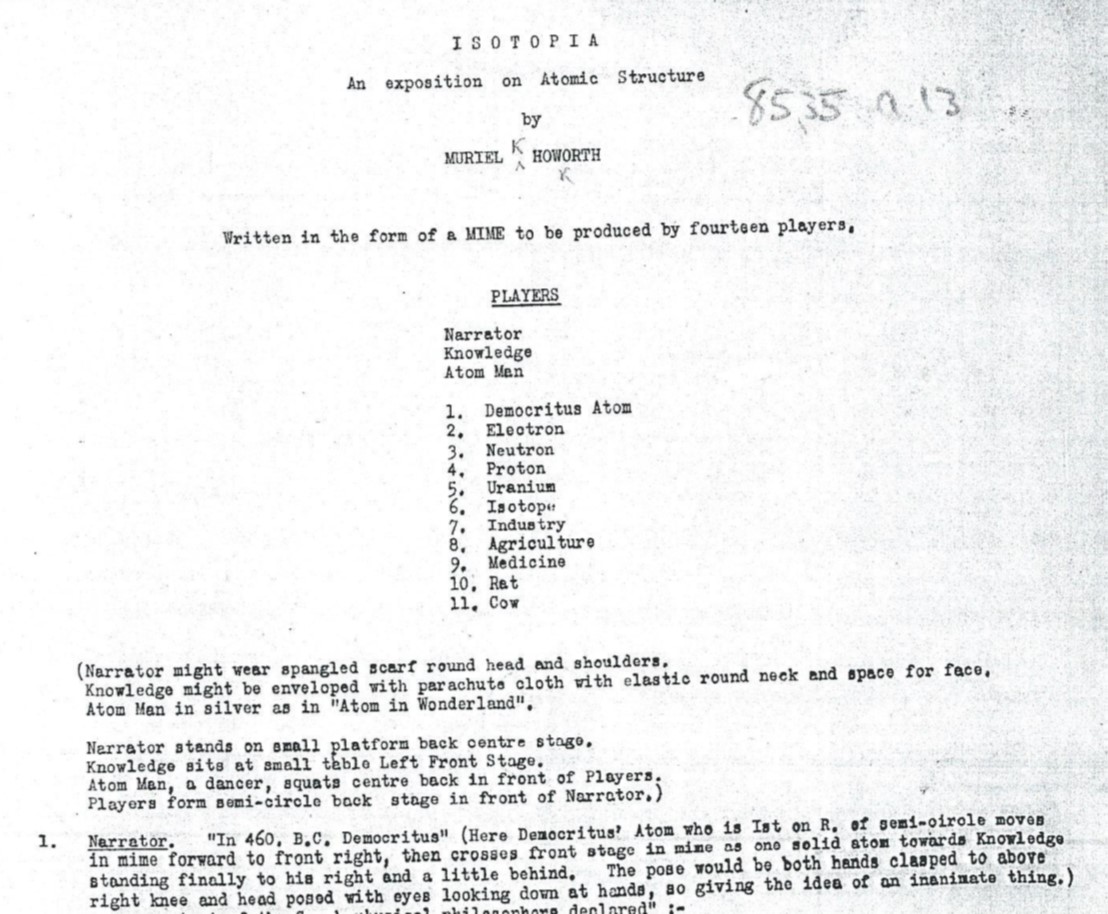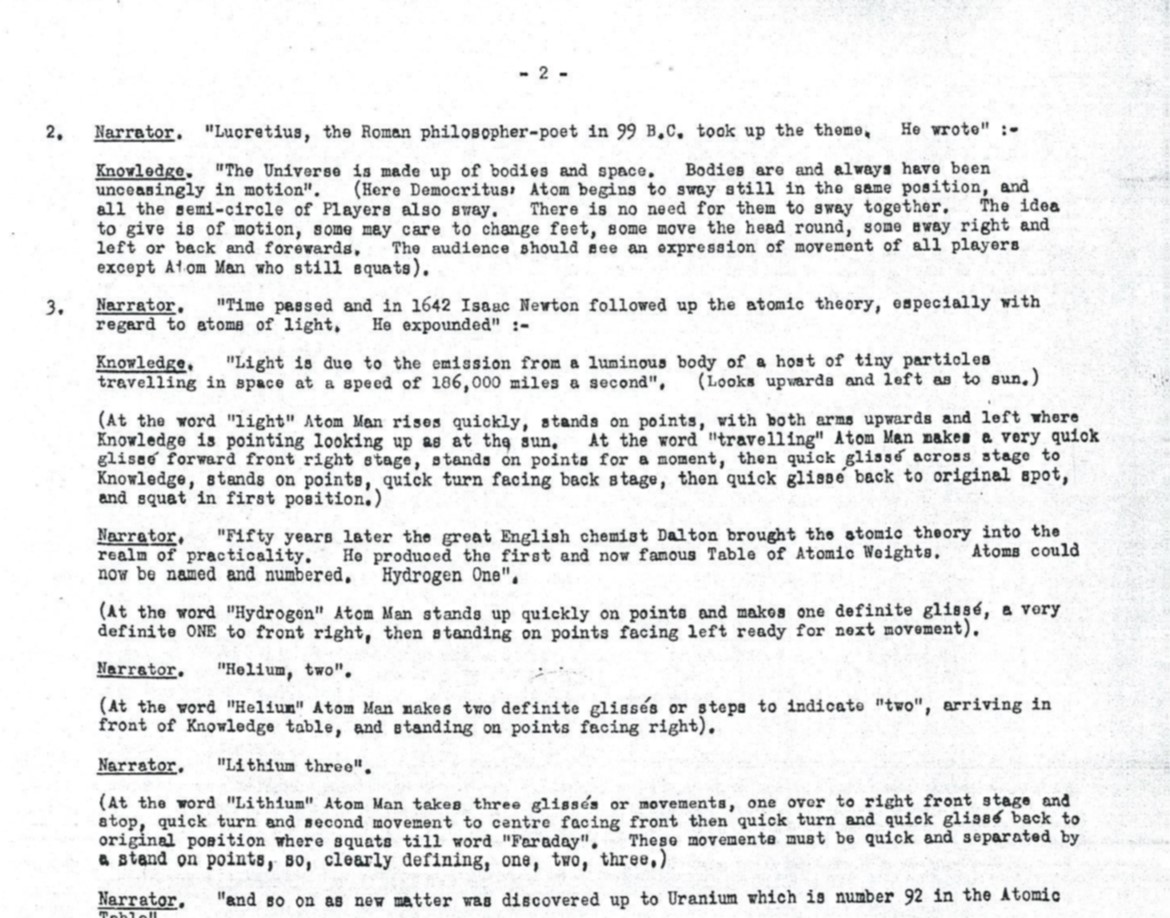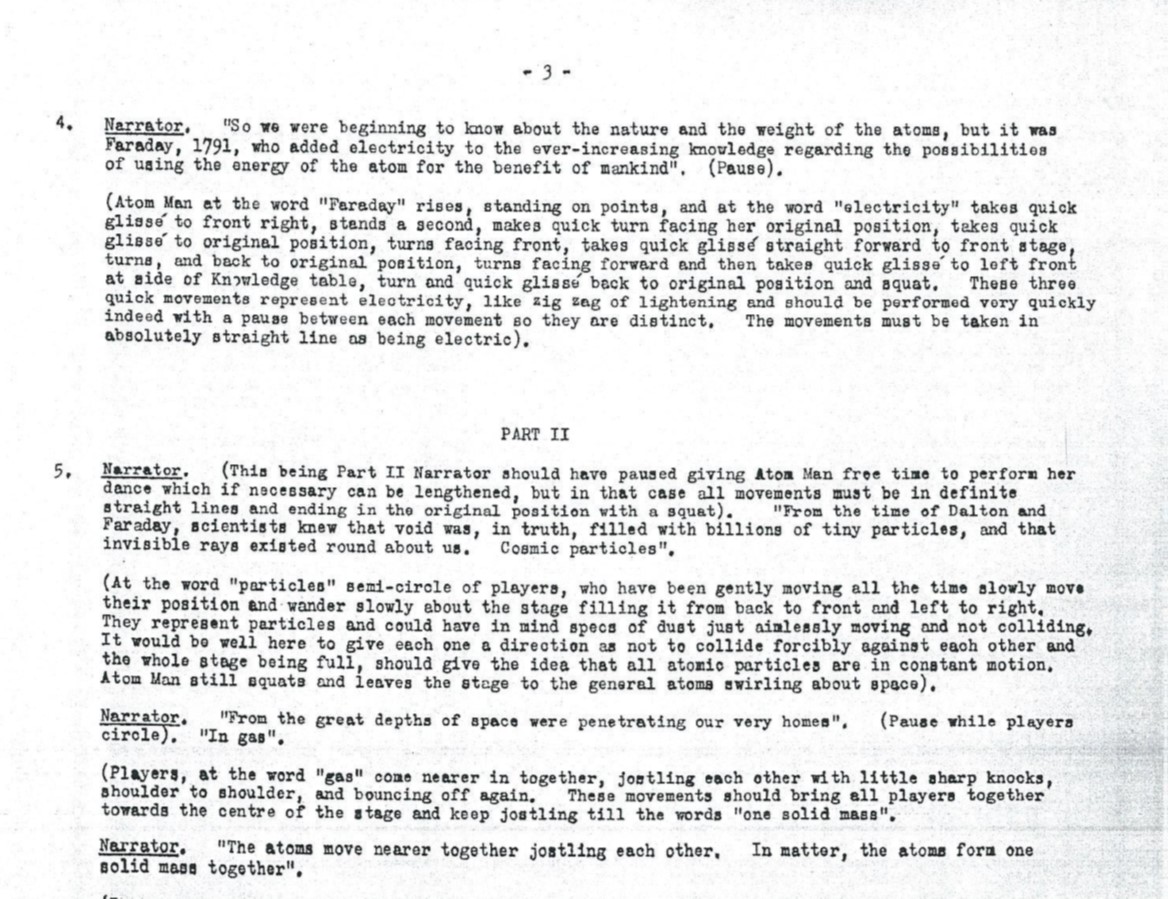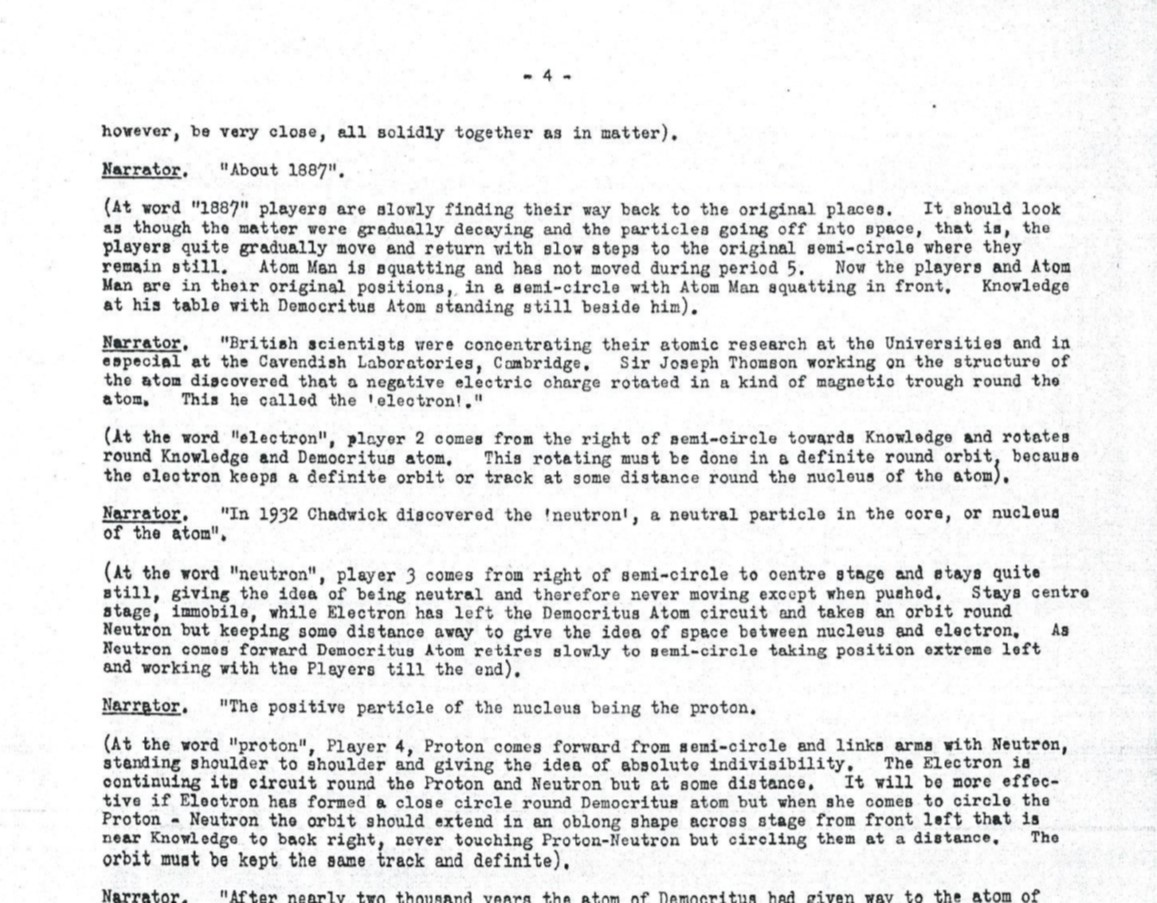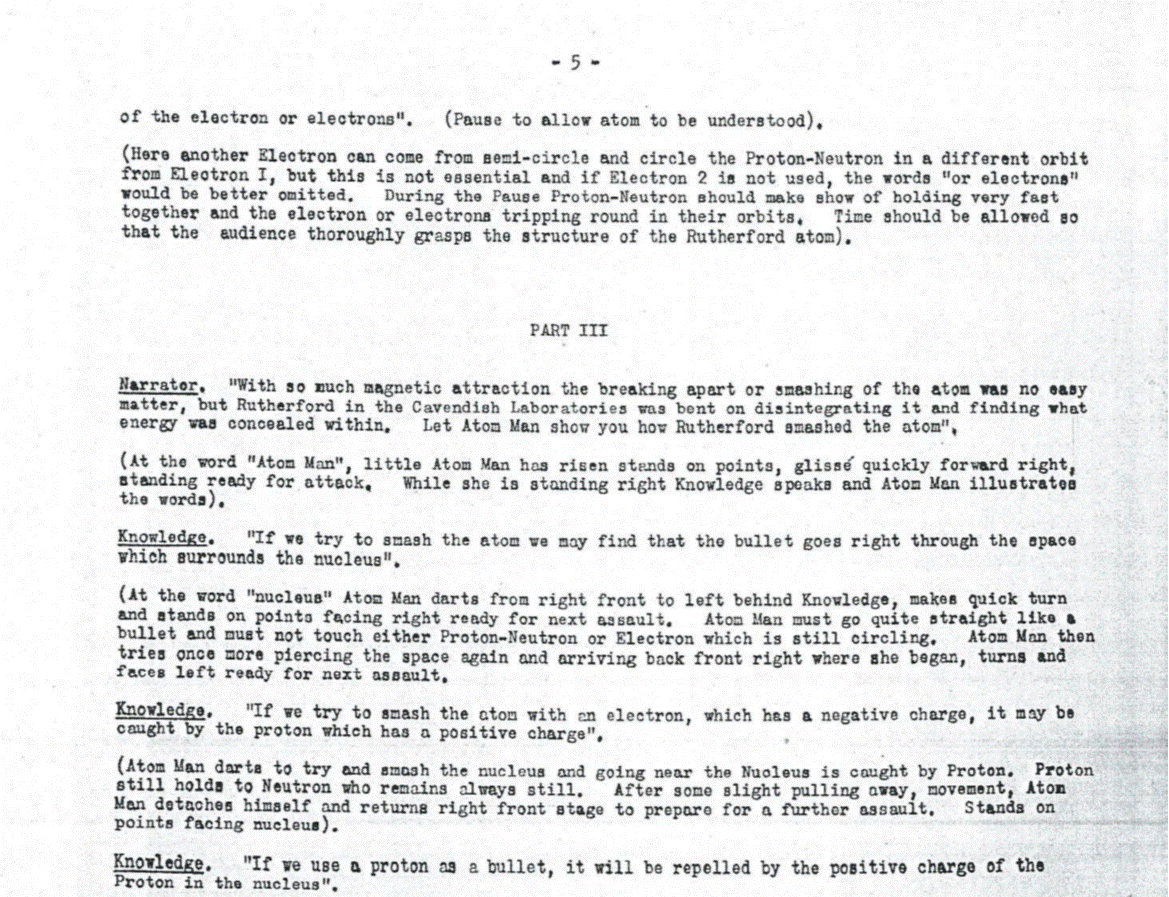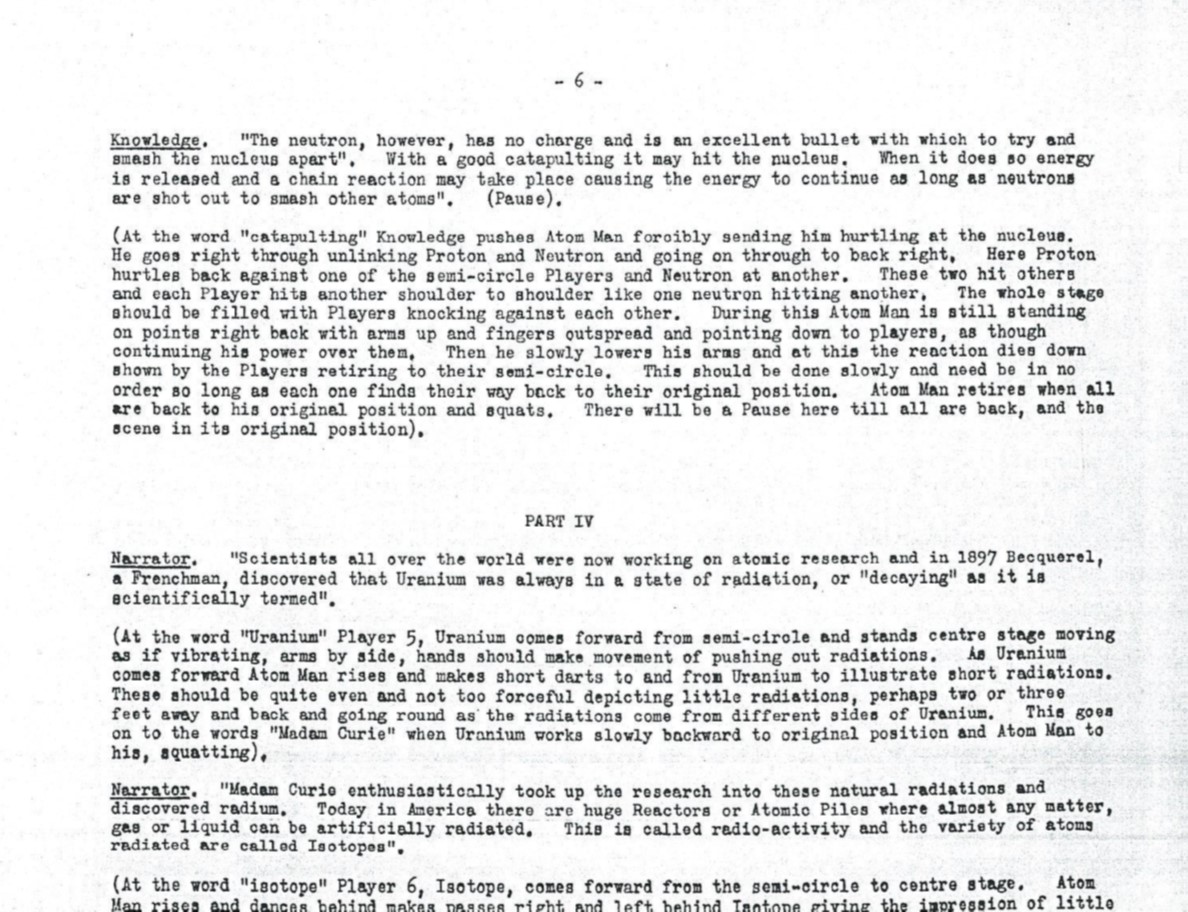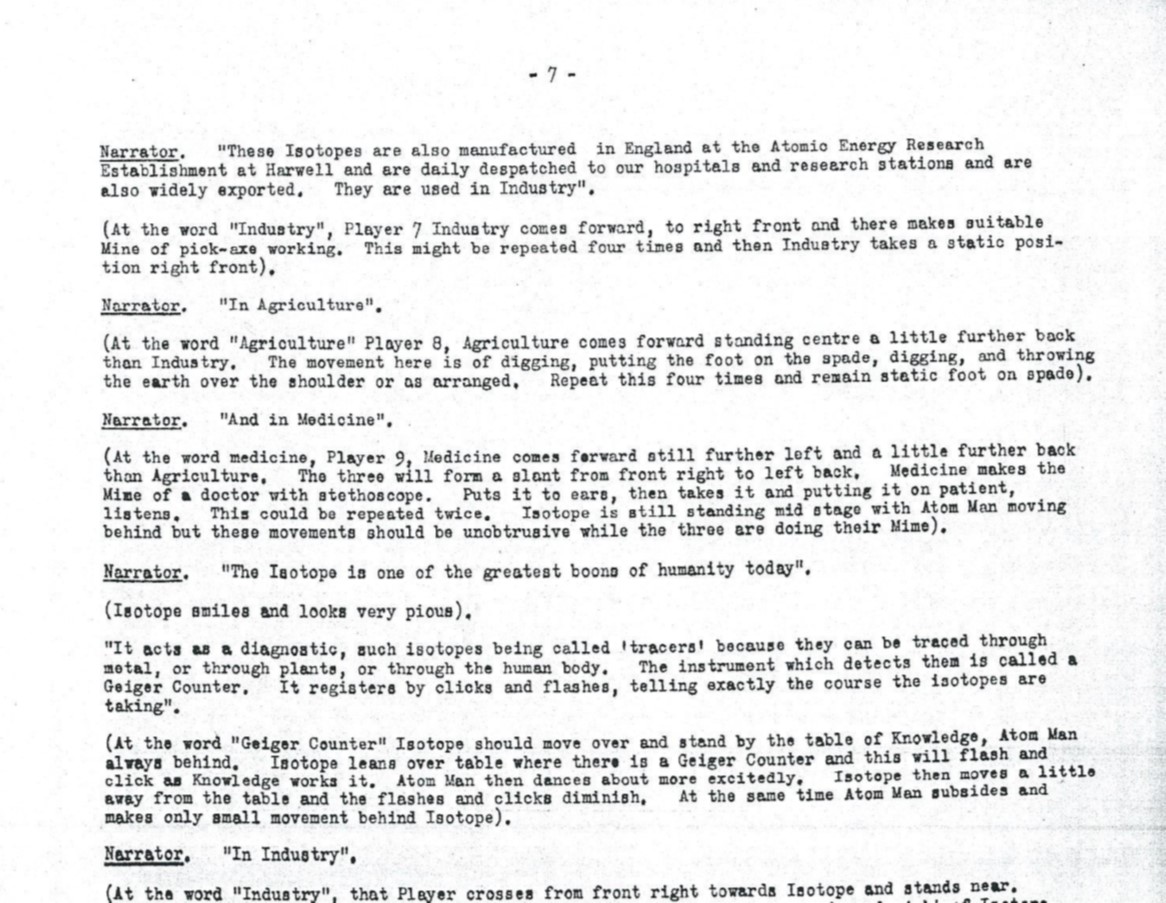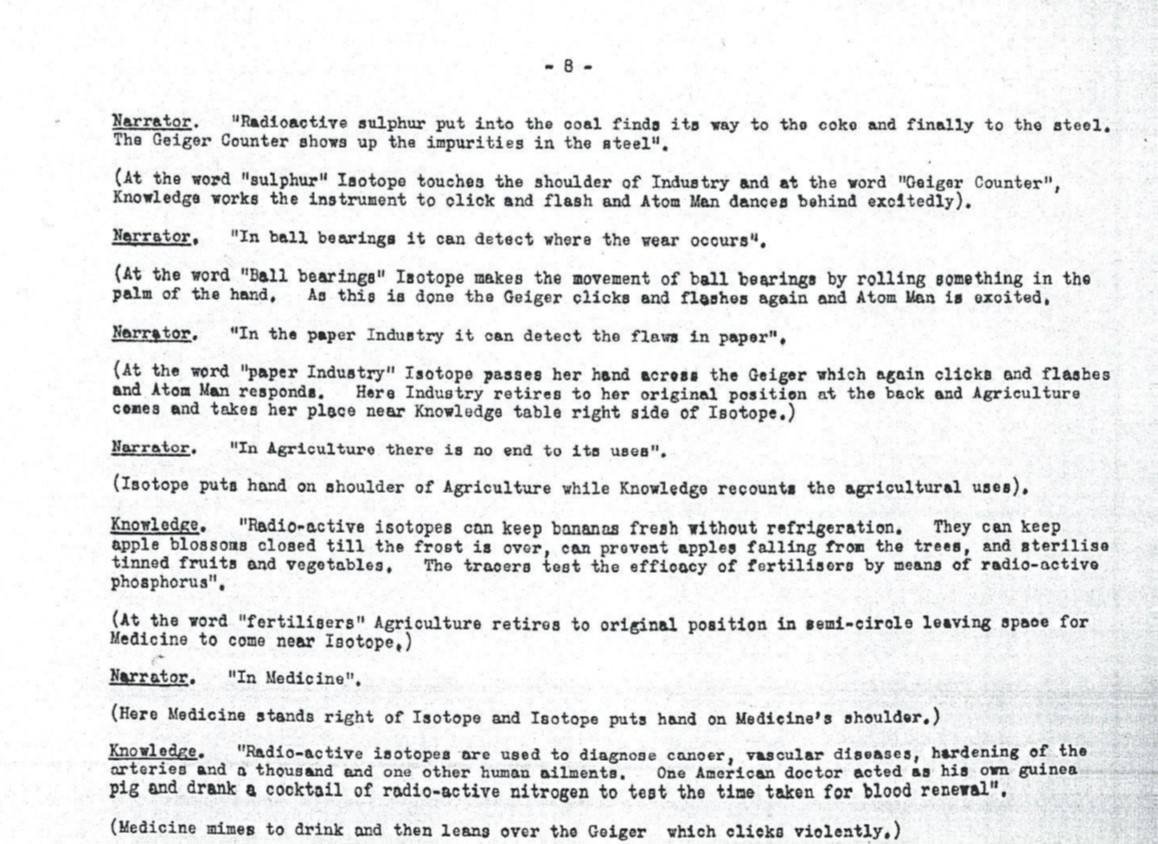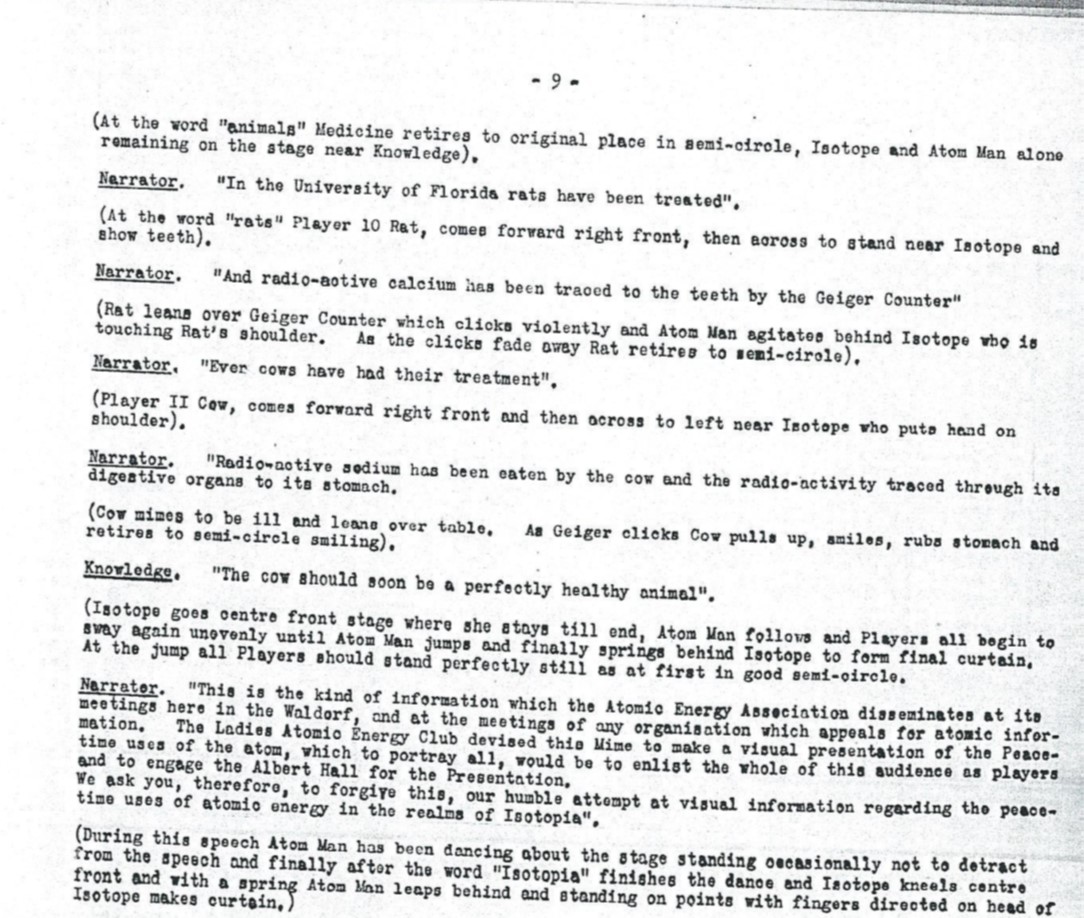Muriel’s Eccentric Atomic Occasions Round 1: An Atomic Ballet
“Before a select audience of 250 rapt ladies and a dozen faintly bored gentlemen, some 13 bosomy A.E. Associates in flowing evening gowns gyrated gracefully about a stage in earnest imitation of atomic forces at work. An ample electron in black lace wound her way around two matrons labeled ‘proton’ and ‘neutron’ while an elderly ginger-haired Geiger counter clicked out their radioactive effect on a pretty girl named Agriculture. At a climactic moment, a Mrs. Monica Davial raced across the stage in spirited representation of a rat eating radioactive cheese. Mrs. Davial, it was noted in the program, had ‘recently returned from a trip to Tibet’ and hence presumably had a nice understanding of these things.”
Anon., ‘Foreign news: the explosion and all’, Time, 30 October 1950, p. 40, available online at www. time.com/time/magazine/article/0,9171,805562,00.html.
On the occasion of its second anniversary, the Atomic Energy Association of Great Britain had staged Isotopia: An Exposition on Atomic Structure, Written in the Form of a Mime (author, Mrs Muriel Howorth of course) at the Aldwych Waldorf Hotel. They were hoping for a repeat performance at the Royal Albert Hall. “We would have room there”, Muriel explained with a hectic smile to the Time reporter, ‘for all the 92 transmutations of the atom. Then we could have the explosion and all”. It is a great loss to atomic history that this explosive performance was never realized.
Muriel is a historian’s dream: vain enough to have felt that everything she did was important. She donated her hand-typed Isotopia to the British Library. It is the only copy known to exist, and is presented here for the first time in all its spangled, Atom Man glory. If you’d like to re-stage it, DEFINITELY get in touch via the contact form.
Isotopia even had a sister composition, a piano concerto entitled Atomica by one Lady Anderson, that was itself reviewed in a 1957 Life magazine article on English eccentrics: “Atomica consisted chiefly of loud, heavy chords, which indicated atomic bombs, and springing, tinkling passages which reflected the extreme surprise and alarm of the human race”. If only it, too, had been preserved in the British Library for posterity!
